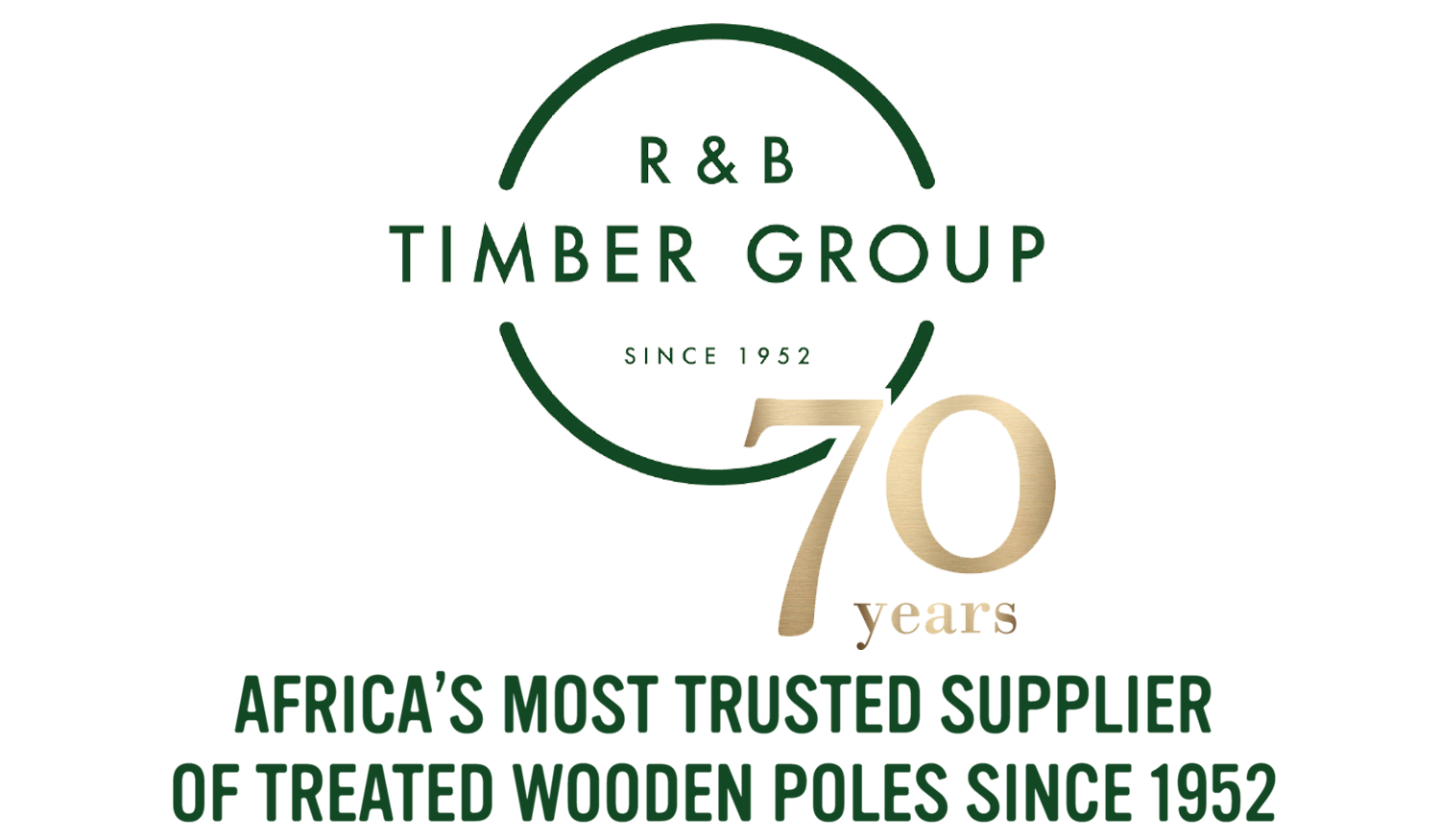EXPORTING UTILITY POLES ACROSS THE GLOBE
Utility Poles, also known as transmission poles, support overhead power lines and various other public utilities, such as cable, fibre optic cable, and related equipment such as transformers and street lights. It can be referred to as a transmission pole, telephone pole, telecommunication pole, power pole, hydro pole, telegraph pole, or telegraph post, depending on its application. R&B Group specializes in the manufacturing, large scale order and export of utility poles throughout Africa, and globally. Our easy access to the harbors of the South African East coast make shipping them to any destination simple.
The market for treated poles is predominantly split into two sectors- the building & fencing market and then the utility pole market. The two markets work hand in hand as we are able to sell the full range of sizes from small poles to really big poles. The future growth however is in utility poles as the demand from our national power utility, Eskom, and the many power companies throughout Africa is high. To carry power you need poles so you can only imagine what the future holds for our product. Currently we are supplying throughout South Africa and many African countries- Kenya, Tanzania, Uganda, Rwanda, Zambia, Mozambique, Botswana, Namibia, Benin, Angola, Sierra Leone, Ghana, Swaziland, Lesotho, Ethiopia. We have the capacity and capabilities to export utility poles throughout the globe. All timber utility poles, need to be treated using a creosote or CCA process in order for them to be protected from pest, insects and fungi infestations. Timber that is in contact with the ground such as the utility pole itself, will need to be H4 treated, while the cross arms will require a H3 treatment. The lesser treatment is due to there being no ground contact.

